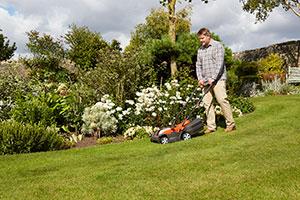Many consumers think that they can enjoy a Phalaenopsis for longer if they buy one with most of the buds closed. Florists are also prone to believing this persistent misconception. Research commissioned by Orchidee Nederland shows, however, that it is much better for the quality of the Phalaenopsis to buy them at a more mature stage.
"It’s not only consumers and buyers for garden centres and supermarkets who believe that closed buds mean a longer enjoyment of a Phalaenopsis in bloom," explains chain advisor Gitta ten Hoope from the Knowledge Centre Product Quality of the flower auction Royal FloraHolland. "Florists also tend to buy their assortment of Phalaenopsis at an immature stage. This leads to an increased risk of bud drop, whether in the store or at the consumer’s home."
Start of quality monitoring
To counter this prevailing idea that marketing Phalaenopsis with many closed buds is contributing to quality, Royal FloraHolland launched an intensive quality monitoring of the product group Phalaenopsis 5 years ago. This study was commissioned by Orchidee Nederland, which was established in the same period by concerned orchid growers (see box). Ten Hoope added, "The aim of this quality monitoring is to improve the knowledge level among the various links in the chain, to create awareness of the problems in the chain and ultimately realise a change in behaviour." 
Reliable representation
All pot orchid growers who are members of Royal FloraHolland are automatically members of Orchidee Nederland. 75% of all members had their product tested. This means that the results of the quality monitoring provide a reliable representation of the total Phalaenopsis supply. The process of quality monitoring was intensive from the start. Every 6 weeks, a randomly selected tray of Phalaenopsis was taken from every Phalaenopsis grower bringing their products to the clock auction. The samples in these trays were then subjected to a quality study lasting two months. This study looked at bud drop and flowering duration as well as the presence of any diseases. The results of the research were communicated to the participating growers so they could compare their results with those of the other growers, although the data were anonymised.
Simulating conditions in the chain
During the quality study, the conditions to which Phalaenopsis is exposed in the chain were precisely simulated. "We were looking at the entire trajectory, from the moment of delivery by the grower to arrival in the consumer’s living room." A situation of unconditioned transport was assumed. To simulate the transport phase, the plants were placed in a cold storage room for 4 days at a temperature of 15 degrees. Then they were placed on a table for 4 days, still in trays and sleeves. "This simulates the conditions in the store." Finally, also in a laboratory setting, the climate conditions of a living room were simulated: a light level of 1000 lux, a relative humidity of 60%, a temperature of 20 degrees and a circadian rhythm of 12 hours of light and 12 hours of dark. "Research has shown that these are the quality conditions of a representative living room," confirmed ten Hoope. In this living room setting, the Phalaenopsis samples are checked twice a week for bud drop and flowering stage, for a period of 8 weeks. "With the conclusion of the study, in the form of a simulation of the living room phase, we have thus examined the entire chain trajectory for the qualitative condition of Phalaenopsis.”
Effect on lifespan and quality
Five years of quality monitoring have produced a rich database, which provides factual insights into the effect of stages of maturity on  lifespan and quality. The research results are unambiguously clear. Plants with a lower percentage than 50% open flowers have a significantly higher percentage of bud drop than plants with more than 50% of their buds open. This concerns substantial differences. For 10% open flowers, the percentage of bud drop is 18%. As the percentage of open flowers increases to 50%, the percentage of bud drop declines accordingly to just 6%. For 100% open flowers, the percentage of bud drop lies under 1%.
lifespan and quality. The research results are unambiguously clear. Plants with a lower percentage than 50% open flowers have a significantly higher percentage of bud drop than plants with more than 50% of their buds open. This concerns substantial differences. For 10% open flowers, the percentage of bud drop is 18%. As the percentage of open flowers increases to 50%, the percentage of bud drop declines accordingly to just 6%. For 100% open flowers, the percentage of bud drop lies under 1%.
Lack of light
Bud drop occurs, for example, as a result of long, dark periods during transport. "Buds are very sensitive to a lack of light and other negative influences, such as draughts, than open flowers. More mature plants thus have a longer lifespan and are less sensitive." According to the quality researcher of Royal FloraHolland, the data from the quality monitoring have already proven their value. "In the course of time, we examined 865 different cultivars. This has produced a wealth of valuable information. Based on it, growers have been able to avoid weaker varieties." As an example Ten Hoope mentioned one variety. "While this variety does have a lovely colour, its quality is not good. On the basis of our findings, many growers decided to stop growing this variety. In this way, the quality monitoring is contributing to realising a higher all-over quality." As a second example, Ten Hoope referred to the strong focus of both growers and the trade on cultivating varieties with multiple spikes. The study showed, however, that bud drop increased in parallel with the number of spikes. "That can be easily explained. A plant with four spikes has smaller buds than one with one or two spikes."
Orchidee Nederland
Orchidee Nederland was established in 2012 by pot orchid growers, who realised the necessity to jointly ensure the position of orchids and to work on the image of the product. Since its establishment, Orchidee Nederland has launched various initiatives to position the product group better. These initiatives can roughly be classified into two types of activities. On the one hand are promotional activities to draw the attention of consumers to orchids and on the other are quality- and chain-oriented activities.
Do you have any questions about this topic?
Please contact Gitta ten Hoope, email: GittaTenHoope@royalfloraholland.com
Find out more here


 lifespan and quality. The research results are unambiguously clear. Plants with a lower percentage than 50% open flowers have a significantly higher percentage of bud drop than plants with more than 50% of their buds open. This concerns substantial differences. For 10% open flowers, the percentage of bud drop is 18%. As the percentage of open flowers increases to 50%, the percentage of bud drop declines accordingly to just 6%. For 100% open flowers, the percentage of bud drop lies under 1%.
lifespan and quality. The research results are unambiguously clear. Plants with a lower percentage than 50% open flowers have a significantly higher percentage of bud drop than plants with more than 50% of their buds open. This concerns substantial differences. For 10% open flowers, the percentage of bud drop is 18%. As the percentage of open flowers increases to 50%, the percentage of bud drop declines accordingly to just 6%. For 100% open flowers, the percentage of bud drop lies under 1%. 